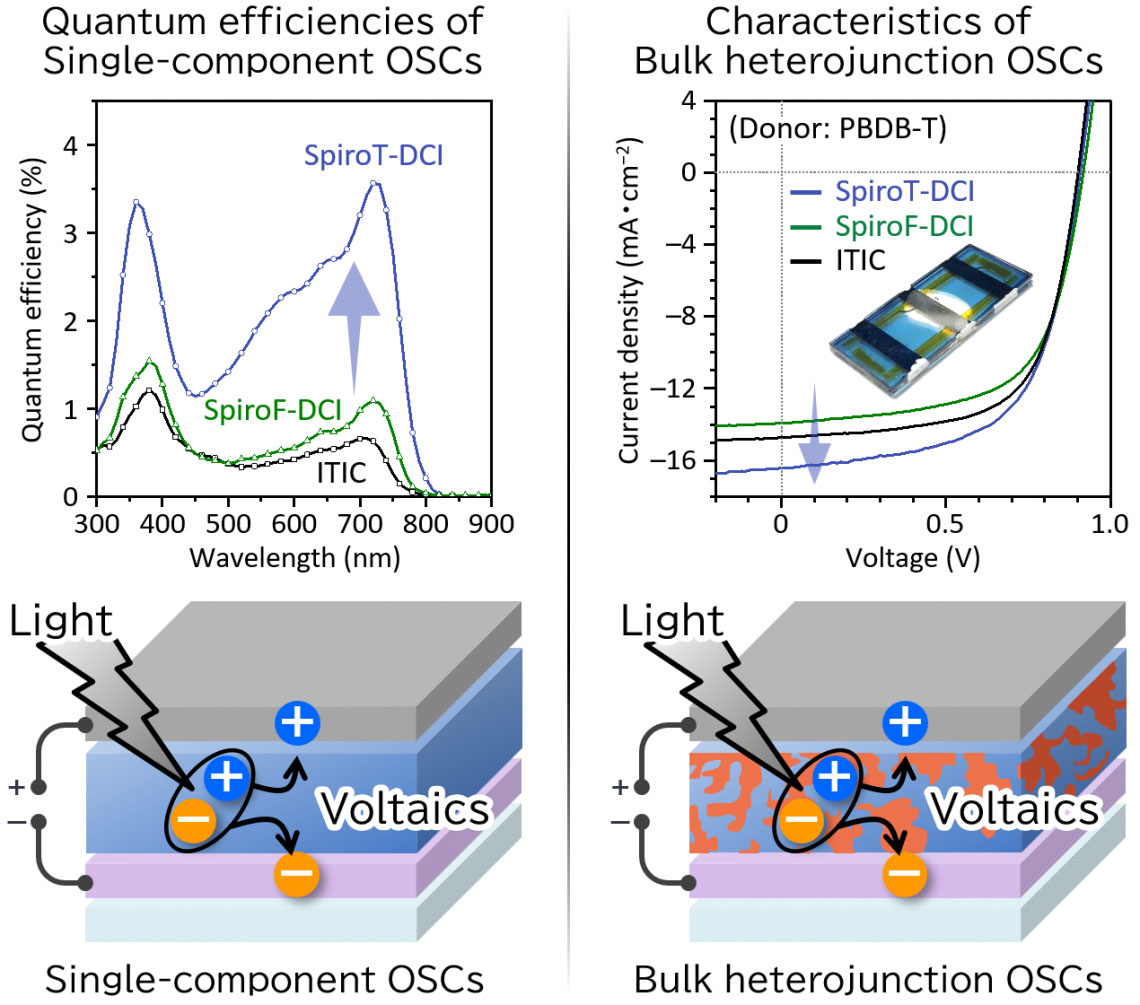| Sep 10, 2024 |
Molecular level changes translate to big efficiency gains for organic solar cells
(Nanowerk News) Organic solar cells (OSCs) – promising alternatives to traditional inorganic solar cells – have many features that make them key players in a greener future. One of these features is tunable chemistry, which allows scientists to precisely adjust or modify the properties of chemical systems to achieve desired outcomes. Now, researchers from Japan have tuned them to increase power conversion efficiency.
|
|
In a study published in Angewandte Chemie International Edition ("Nonfullerene Acceptors Bearing Spiro-Substituted Bithiophene Units in Organic Solar Cells: Tuning the Frontier Molecular Orbital Distribution to Reduce Exciton Binding Energy"), researchers from Osaka University have reported a new organic semiconductor that gives better power conversion efficiency than the accepted standard.
|
|
OSCs are light and flexible and can be produced on a large scale for relatively low cost. They are therefore highly promising for applications such as agrivoltaics where large areas of land are used to simultaneously grow crops and turn the sun’s energy into electricity.
|
|
Generally, OSCs contain two organic semiconductors, one to transport charge carriers known as electrons (the acceptor) and one to transport the other carriers known as holes (the donor). A current flows in a semiconductor when excitons – combination of an electron and a positive hole – are split into these carriers giving electron-hole pairs. Excitons are bound tightly together, but sunlight with enough energy can cause them to dissociate and generate a current.
|
 |
| Quantum efficiencies of single-component organic solar cells (right) and performances of bulk heterojunction organic solar cells (left). (Image: Osaka University)
|
|
“Reducing the amount of energy needed to break up an exciton—the exciton binding energy—makes it easier to convert the light into the desired current,” explains lead author of the study Seihou Jinnai. “We therefore focused on the factors that contribute to the binding energy, one of which is the distance between the electron and the hole. If this is increased, then the binding energy should decrease.”
|
|
The researchers therefore designed a molecule with side units that had the effect of separating the parts of the molecule that accommodate the electron and the hole. The synthesized molecule was used as an acceptor in a bulk heterojunction OSC along with a donor material, and the system showed increased power conversion efficiency compared with the accepted standard. The molecule was also tested as the single component of an OSC and showed better conversion of light to current.
|
|
“The molecule we designed shows that the nature of side units in acceptor molecules is key to the exciton behavior and its efficiency as a result,” says senior author Yutaka Ie. “This result provides an important demonstration of what can be achieved by tuning chemistry for OSCs applications.”
|
|
The findings indicate the potential of rational design of organic semiconductors and are expected to lead to new devices including high-performance OSCs and wavelength-selective transparent OSCs. General improvements in performance are also expected to enhance the potential of OSCs in large-scale photovoltaic applications, naturally leading to green energy alternatives.
|

